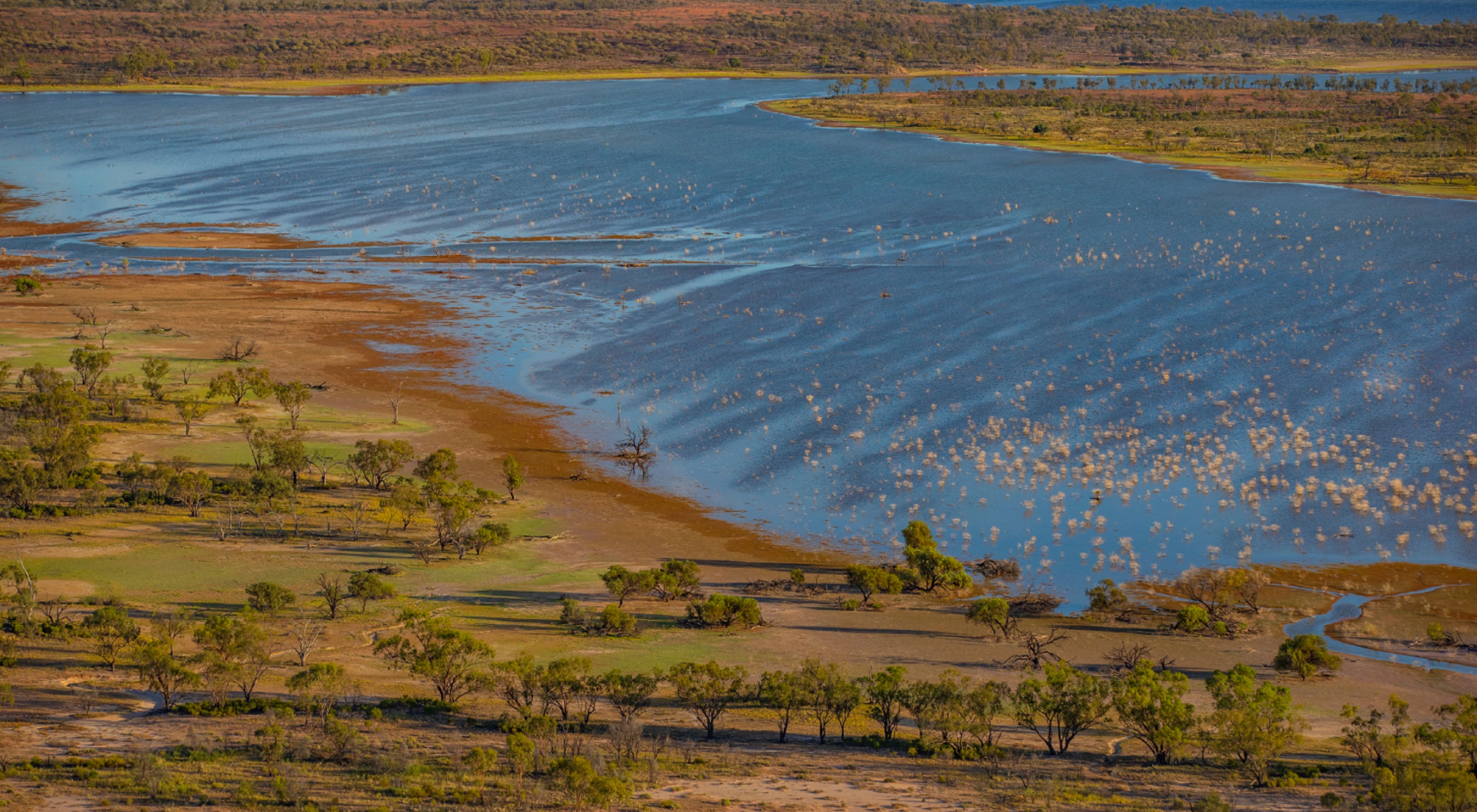TNC Australia partners with NSW Government to purchase nationally significant wetlands and create the new Brindingabba National Park
Media Contacts
-
Vanessa Billy
Communications Manager
The Nature Conservancy Australia
Phone: 0478 638 180
Email: vanessa.billy@tnc.org
The Nature Conservancy Australia (TNC) is delighted to have assisted in the creation of Brindingabba National Park in NSW, which secures the conservation values of the land in perpetuity and will contribute to large scale conservation outcomes. TNC financially supported the NSW Government in purchasing the Brindingabba and Brinda Stations, NSW, resulting in 33,903 hectares of ecologically significant land, including nationally significant wetlands, being reserved to create a new national park managed by the National Parks and Wildlife Service.
Ms Alison Rowe, TNC’s Managing Director, said that the creation of the new national park is an important milestone for conservation and biodiversity, which supports the Australian Government’s recent commitment to 30x30 in Australia.
“The acquisition of Brindingabba is a fantastic illustration of the large-scale conservation outcomes public-private partnerships can achieve.
“The land lies in the traditional Paroo River country of the Budjiti and Parunti People. There are extensive Aboriginal artefacts and hearth sites are scattered across the property. It also contains the historic Brindingabba Homestead, which was constructed around 1893,” Ms Rowe said.
The purchase price for the Brindingabba property was supported by a grant from The Nature Conservancy Australia. TNC brokered contributions from charitable foundations Wyss Foundation, as well as from artist Haley Mellin’s Art into Acres initiative through Re:wild.
Molly McUsic, President of The Wyss Foundation, said The Wyss Foundation was proud to support the purchase of the property and increase the size of Australia’s network of protected areas.
“Meeting the global 30x30 conservation goal to protect at least 30% of the Earth’s surface by 2030 is going to take replicating locally-driven protection initiatives, like the purchase of this incredible property, not just in Australia, but all across the world,” Ms McUsic said.
“This important act will safeguard the landscapes’ rich biodiversity and conserve nationally significant wetlands as well as Aboriginal cultural heritage sites,” Ms Mellin said.
Minister for Environment James Griffin said the creation of Brindingabba National Park, 175 kilometres north-west of Bourke, means more than 602,500 hectares of land has been secured for conservation as part of the NSW national park estate since 2019.
“The addition of Brindingabba National Park is significant because its rich biodiversity will now be protected in perpetuity, and the people of NSW will be able to experience it for themselves for generations to come,” Mr Griffin said.
“The new Brindingabba National Park protects an important part of Lake Wombah and more than 7,000 hectares of Yantabulla Swamp, which are both nationally important wetlands.
“This new National Park is a fantastic example of how partnerships can boost our efforts to conserve biodiversity, and we’re working towards more opportunities like this.”
Dr James Fitzsimons, Director of Conservation and Science for TNC Australia, said that Brindingabba is an exceptional area, as the Yantabulla Swamp and Lake Wombah are part of the Paroo Floodplain and Currawinya Key Biodiversity Area.
“Thirty different ecosystems are found on the property, including endangered Great Artesian Basin Springs communities, Coolibah-Black Box Woodlands and the Brigalow-Gidgee woodlands and shrublands. The Yantabulla wetlands are a vital breeding ground and habitat for waterbirds, including Black Swans, Pink-eared Ducks, herons and Australia’s rarest waterfowl, the Freckled Duck.
“The Mulga Lands bioregion has some of the lowest levels of representation in the NSW national parks system, so the protection of Brindingabba is highly significant. Brindingabba adjoins two privately protected areas – Naree and Yantabulla Stations – forming a conservation corridor of more than 60,000 ha,” Dr Fitzsimons said.
“With the Convention on Biological Diversity’s Post-2020 Global Biodiversity Framework scheduled to be finalised at the end of 2022, TNC is extremely proud to have worked with its partners in the NSW Government, the Wyss Foundation and Art Into Acres to protect Brindingabba and its significance for nature,” said Ms Rowe.
The Nature Conservancy is a global conservation organisation dedicated to conserving the lands and waters on which all life depends. Guided by science, we focus on getting things done efficiently and with the greatest positive impact for conservation. We’re a trusted organisation working in more than 70 countries and territories around the world on innovative solutions to our world’s toughest challenges so that nature and people can thrive together. To learn more about The Nature Conservancy in Australia, follow us on Facebook.
